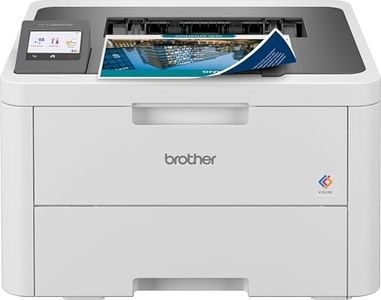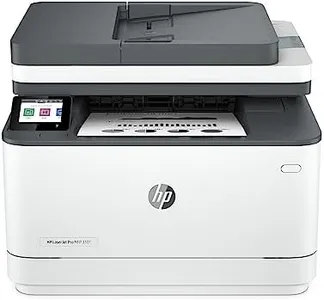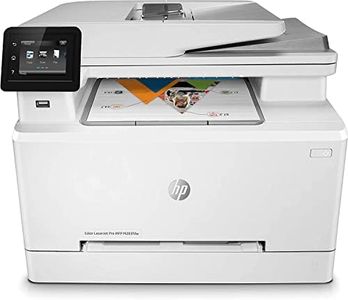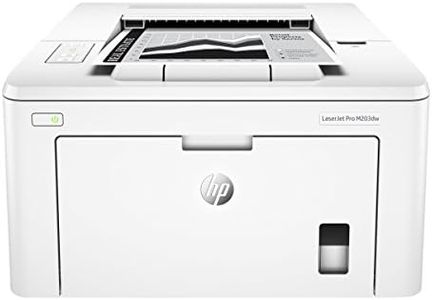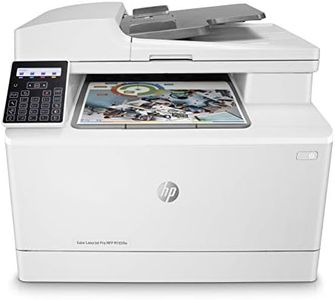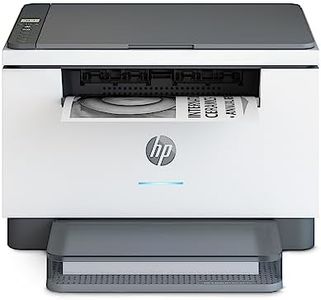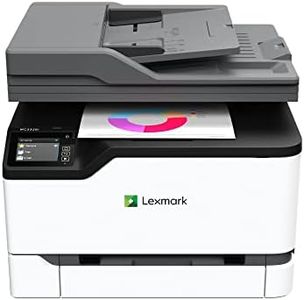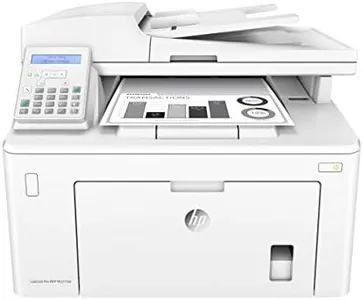We Use CookiesWe use cookies to enhance the security, performance,
functionality and for analytical and promotional activities. By continuing to browse this site you
are agreeing to our privacy policy
9 Best Laser Airprint Printers
From leading brands and best sellers available on the web.Buying Guide for the Best Laser Airprint Printers
When choosing a laser printer that supports AirPrint, the goal is to balance print quality, speed, connectivity, and reliability with the features you'll actually use. AirPrint is a great way to print wirelessly from your Apple devices, but it’s important to also consider the printer's core capabilities to make sure it fits your specific needs, whether that's for your home, a small office, or heavier business use.Print Speed (Pages Per Minute)Print speed, usually measured in pages per minute (PPM), tells you how fast a printer can produce printed pages. This is important if you need to print several pages at once or often have tight deadlines. Printers with lower speeds (up to 20 PPM) are fine for light home use, while medium speeds (20–40 PPM) suit most small offices, and high speeds (40+ PPM) are best for busy or shared environments. Consider your typical print load—occasional users can save on a slower printer, while busy environments will benefit from faster options.
Print Resolution (DPI)Print resolution, measured in dots per inch (DPI), affects how sharp and clear your prints appear. Higher DPI means finer detail, which is vital if you print graphics or detailed images, but it’s less critical for simple text documents. Standard resolution (600 x 600 DPI) is sufficient for general text, while higher resolutions (1200 x 1200 or more) are better for graphics or professional materials. Decide which is right for you based on your print needs—stick to standard if you mainly print text, but go higher for images or sharp presentations.
AirPrint and Wireless ConnectivityAirPrint compatibility allows you to print directly from Apple devices without needing additional drivers. Reliable wireless connectivity means less hassle and more flexibility, so check for consistent support for AirPrint, Wi-Fi, and sometimes other wireless printing services if you have a mixed environment. For most people, ensuring the printer offers easy setup and stable wireless performance is key—especially if multiple users or devices will connect.
Monthly Duty CycleThe monthly duty cycle indicates the maximum number of pages a printer can safely handle each month. It’s important to choose a printer whose duty cycle comfortably exceeds your actual monthly printing needs to ensure longevity and reliable operation. For occasional users, low to moderate duty cycles are fine; if you print regularly or in high volumes, seek a higher duty cycle to match.
Paper Handling CapacityPaper handling capacity covers the size and number of pages the input tray can hold. Larger input trays reduce how often you need to refill paper, which is handy in busy settings. Home users can get by with a 100–150 sheet tray, small offices might want 250–500 sheets, and busy workplaces may need even more. Choose a printer with a paper tray large enough to fit your workflow, taking into account both current and possible future needs.
Duplex (Double-Sided) PrintingDuplex printing means the printer can print on both sides of a sheet automatically. This feature saves paper and effort, especially if you print a lot of multi-page documents. If you value convenience or want to minimize paper use, look for automatic duplexing; for minimal or occasional needs, manual duplexing or single-sided printing might suffice.
Toner EfficiencyToner efficiency describes how many prints you can get from a toner cartridge. Higher efficiency reduces your need for frequent replacements and keeps running costs lower. Printers designed for lower-volume use may have smaller, less efficient cartridges, while business models tend to offer options for high-yield cartridges. Match this with your print volume—if you print often, focus on efficient, high-yield options to save time and money.
Supported Media Types and SizesSome laser printers can handle various paper sizes and special media (like envelopes, labels, or cardstock), while others are limited to standard paper. If you have unique printing needs—such as envelopes for invitations or labels for mailing—make sure the printer supports these media types. For basic document printing, standard letter or A4 compatibility is sufficient; otherwise, check the printer specs for your specific requirements.

